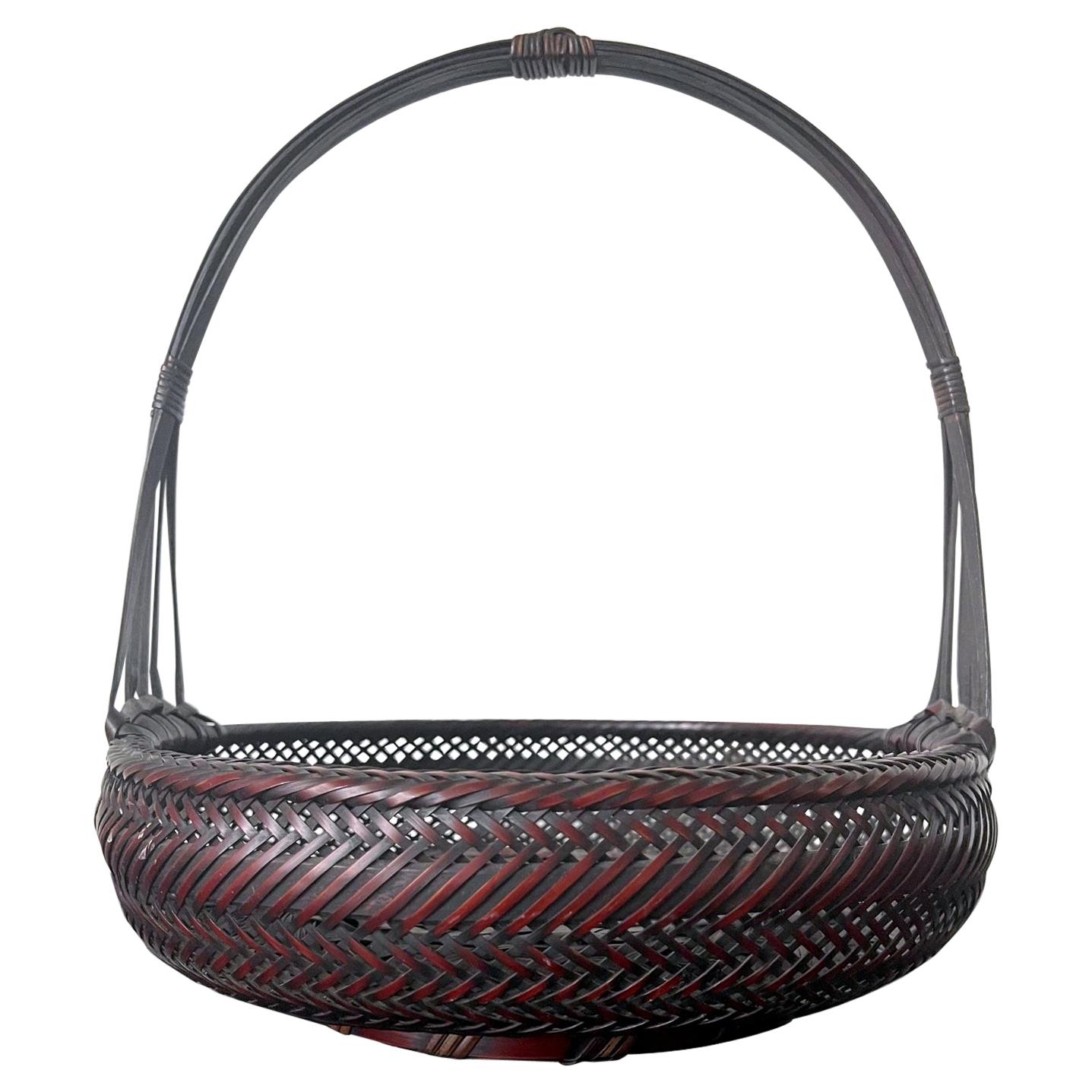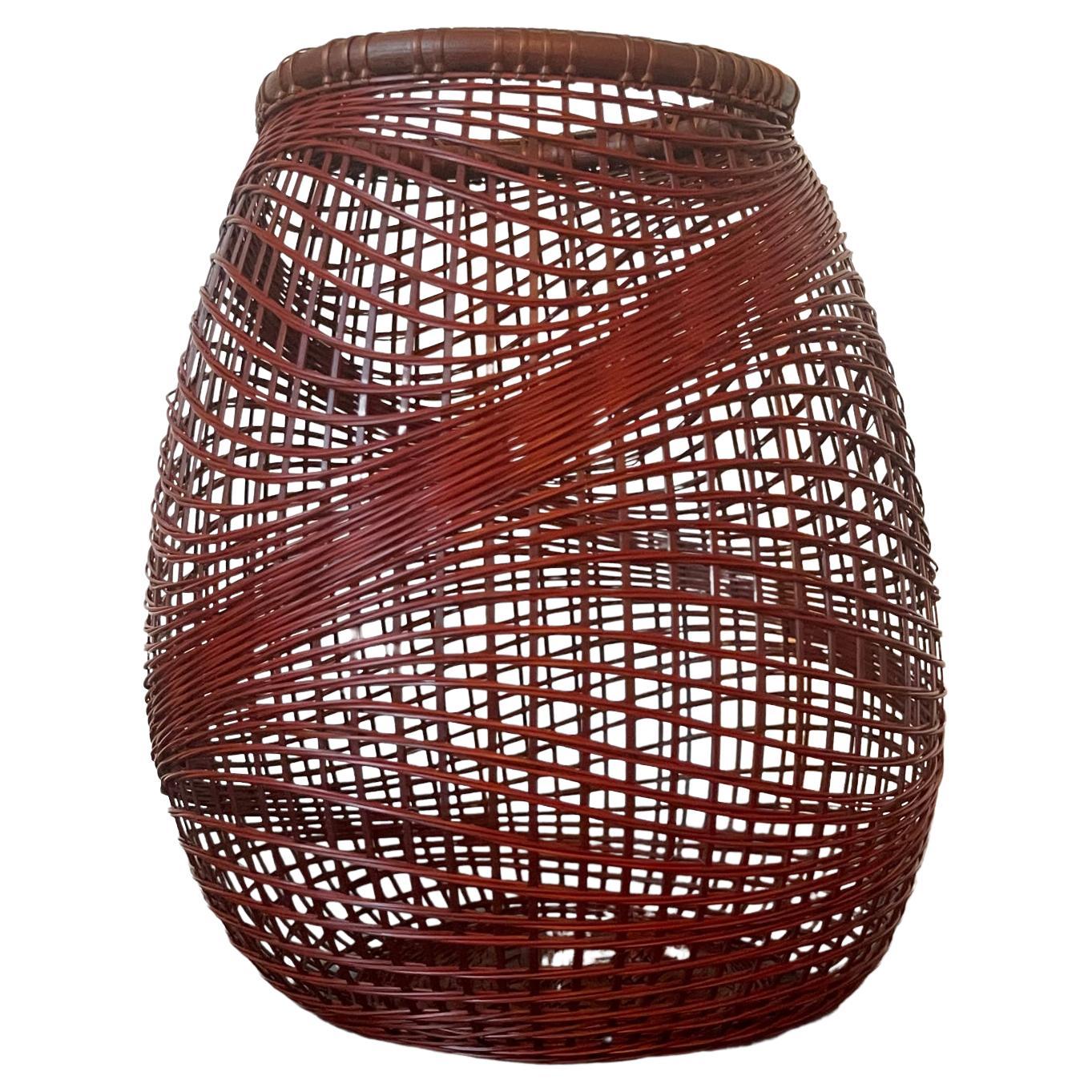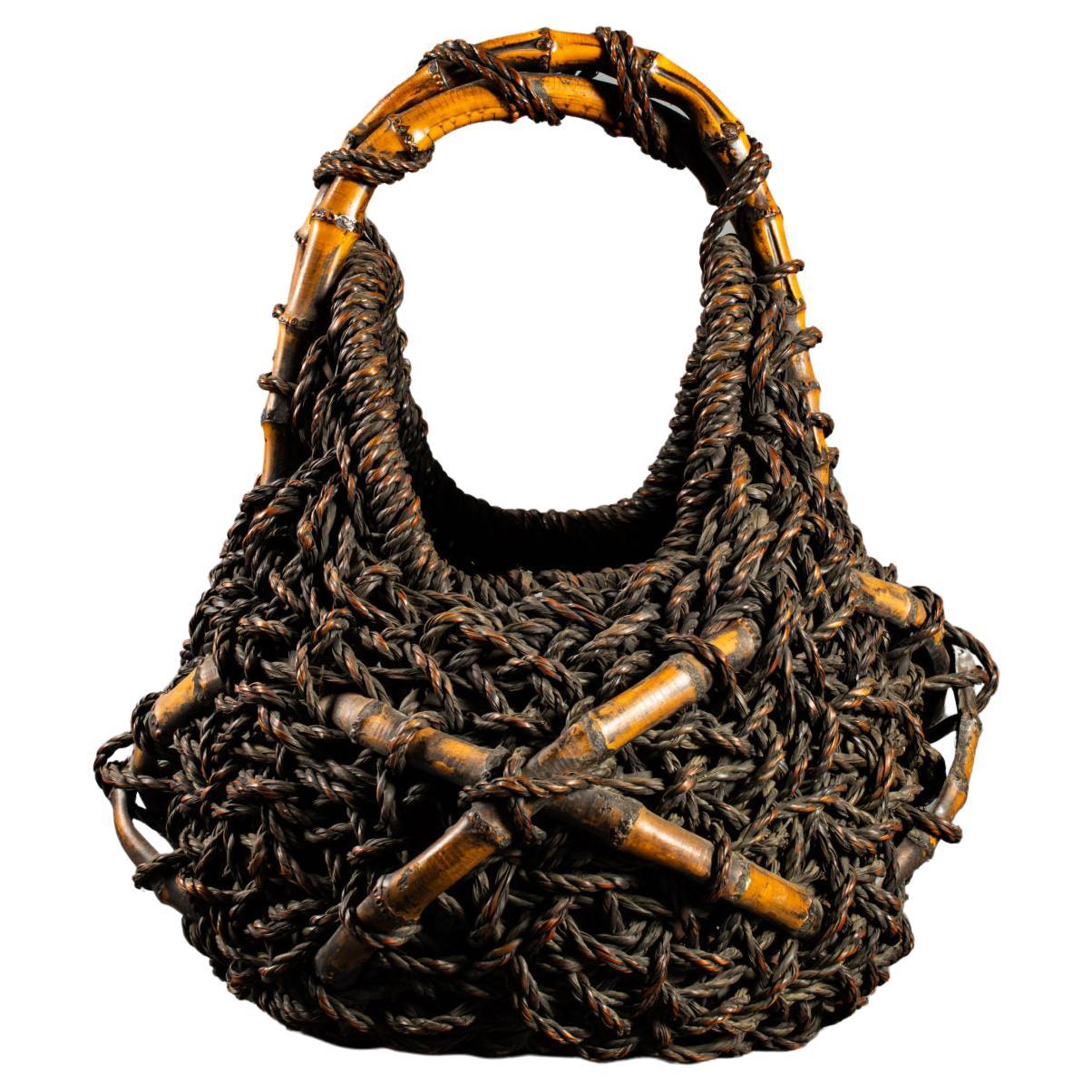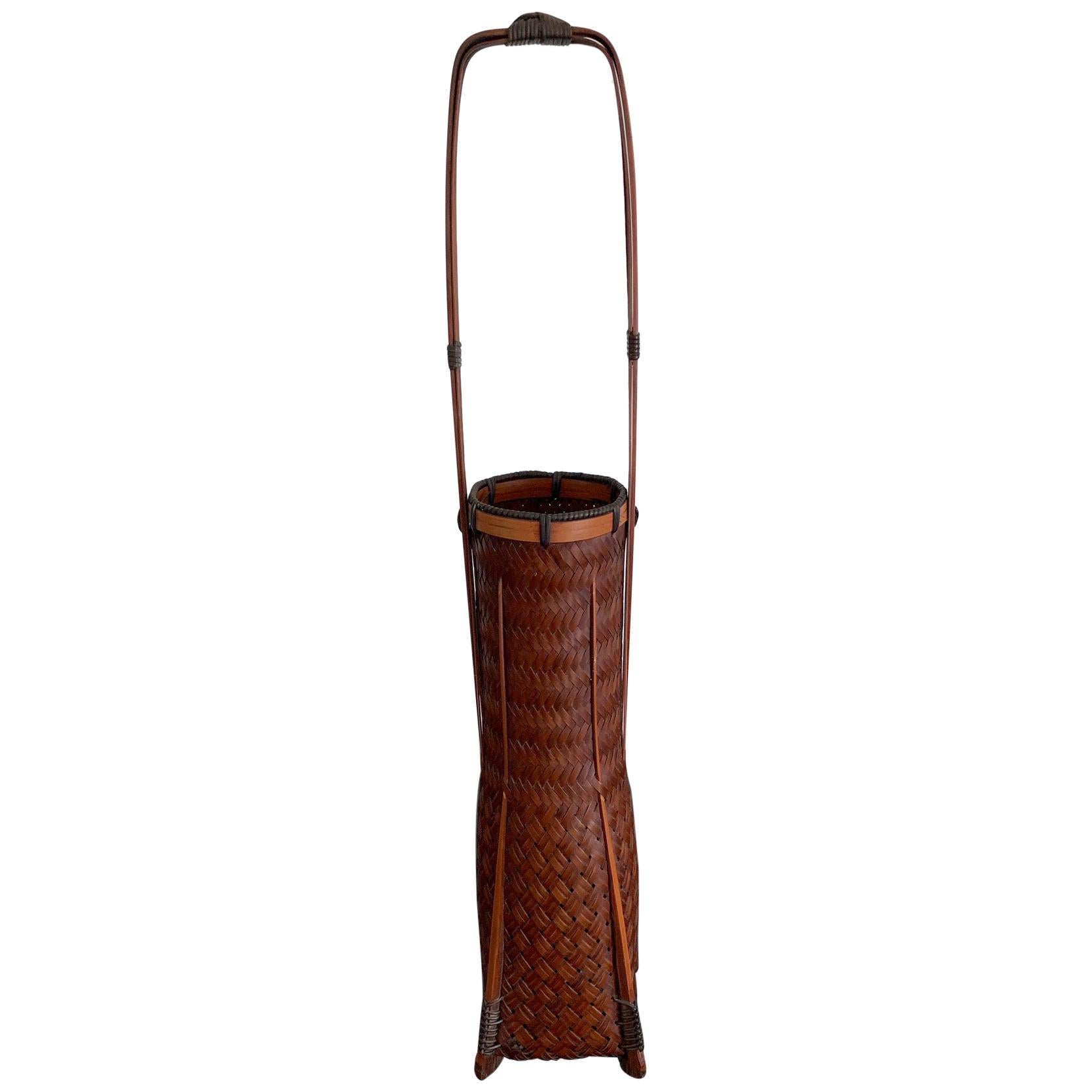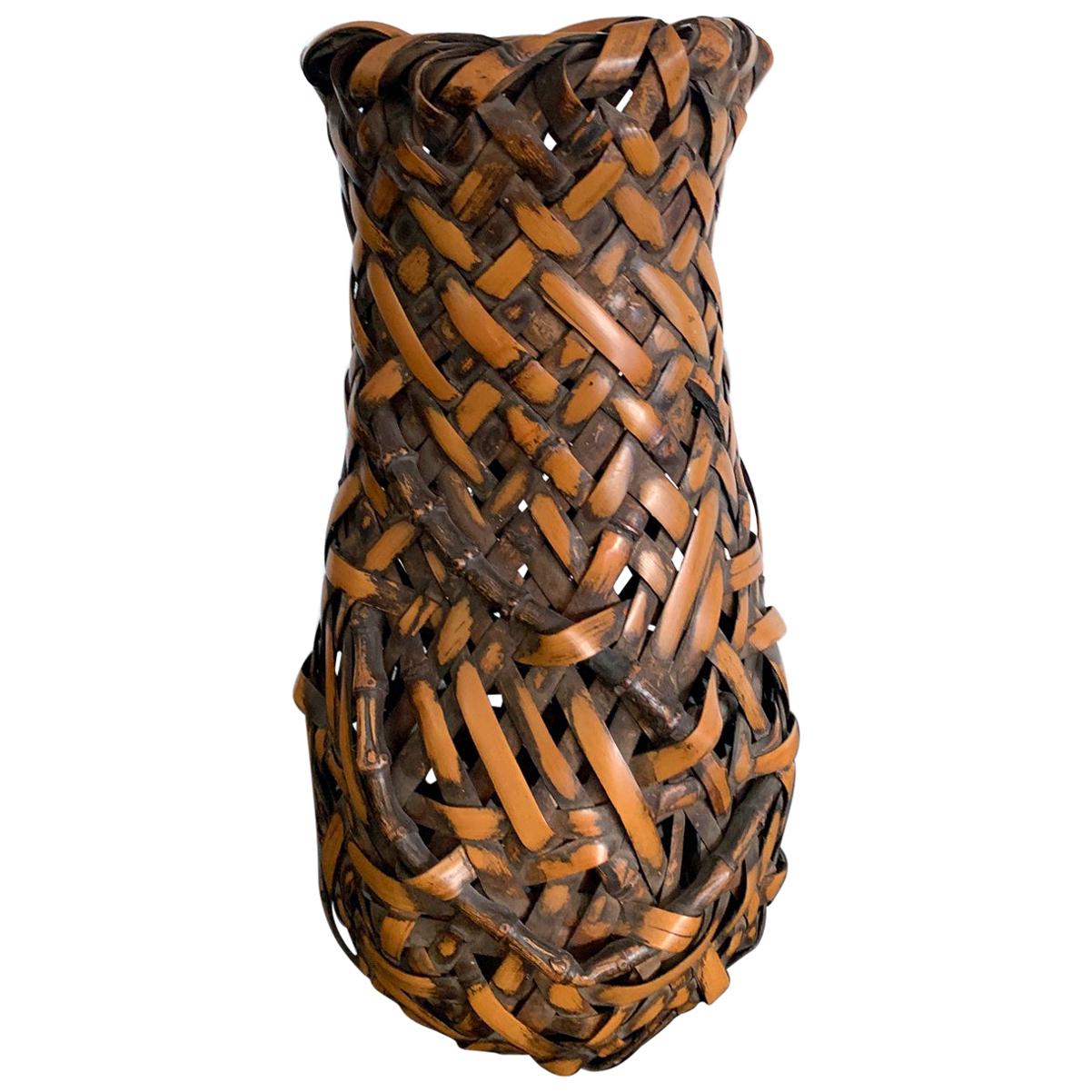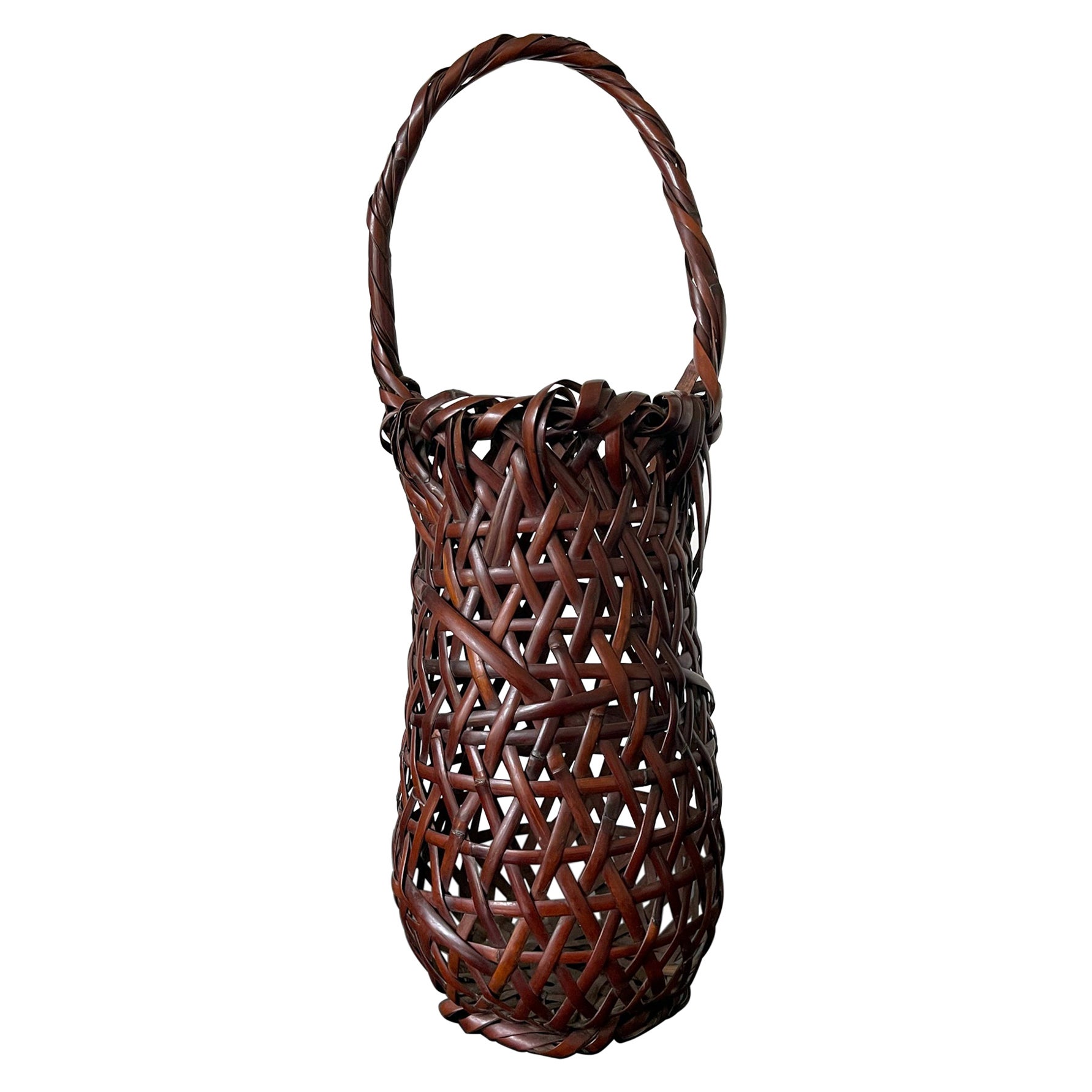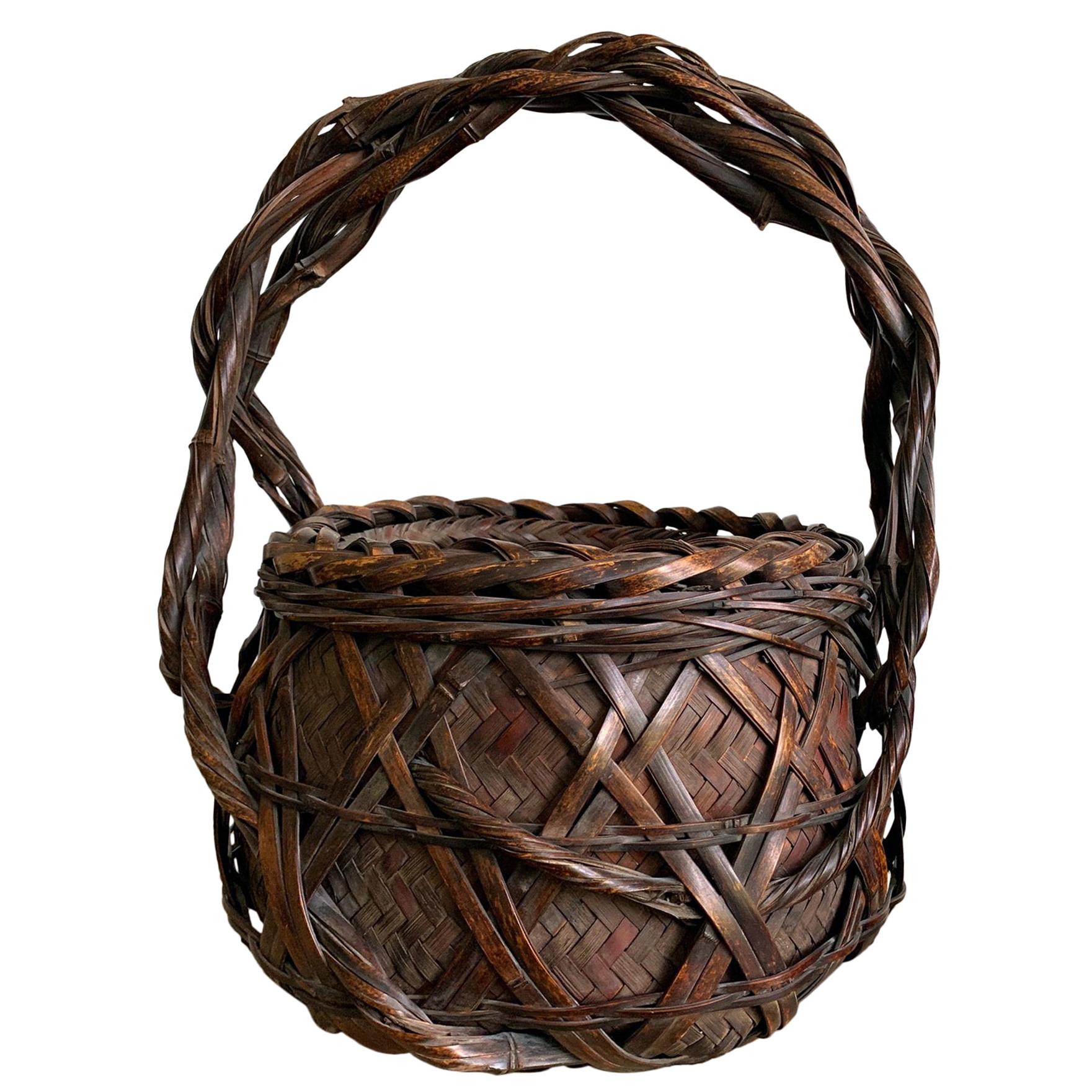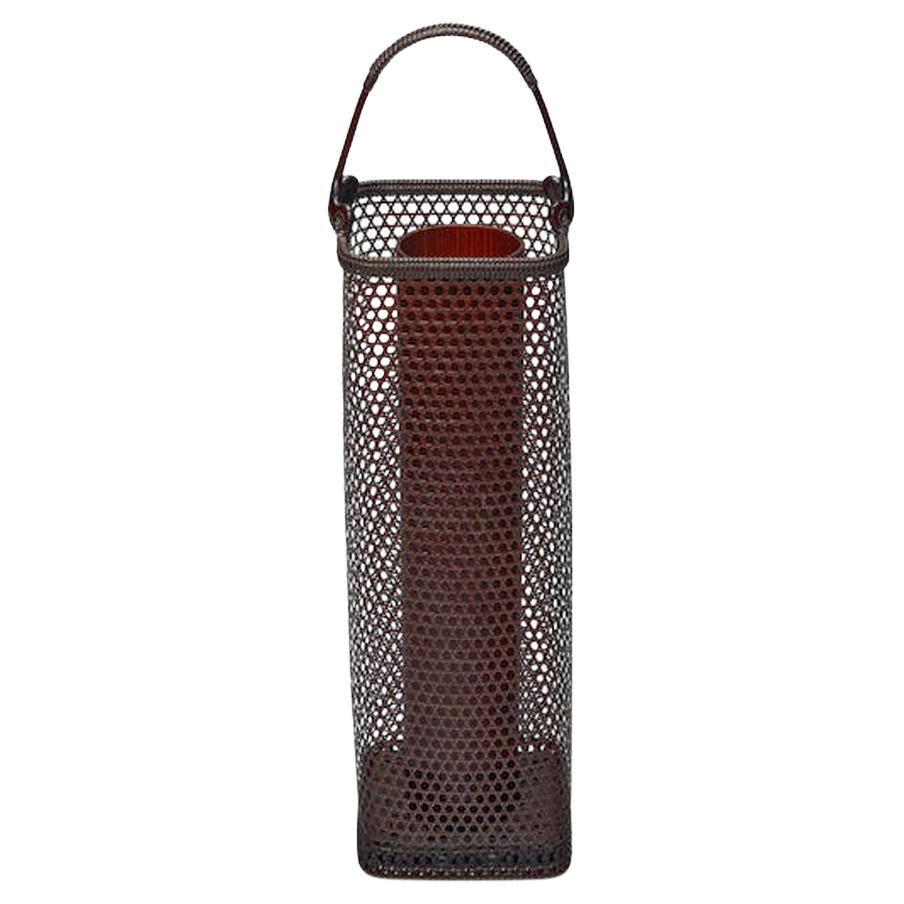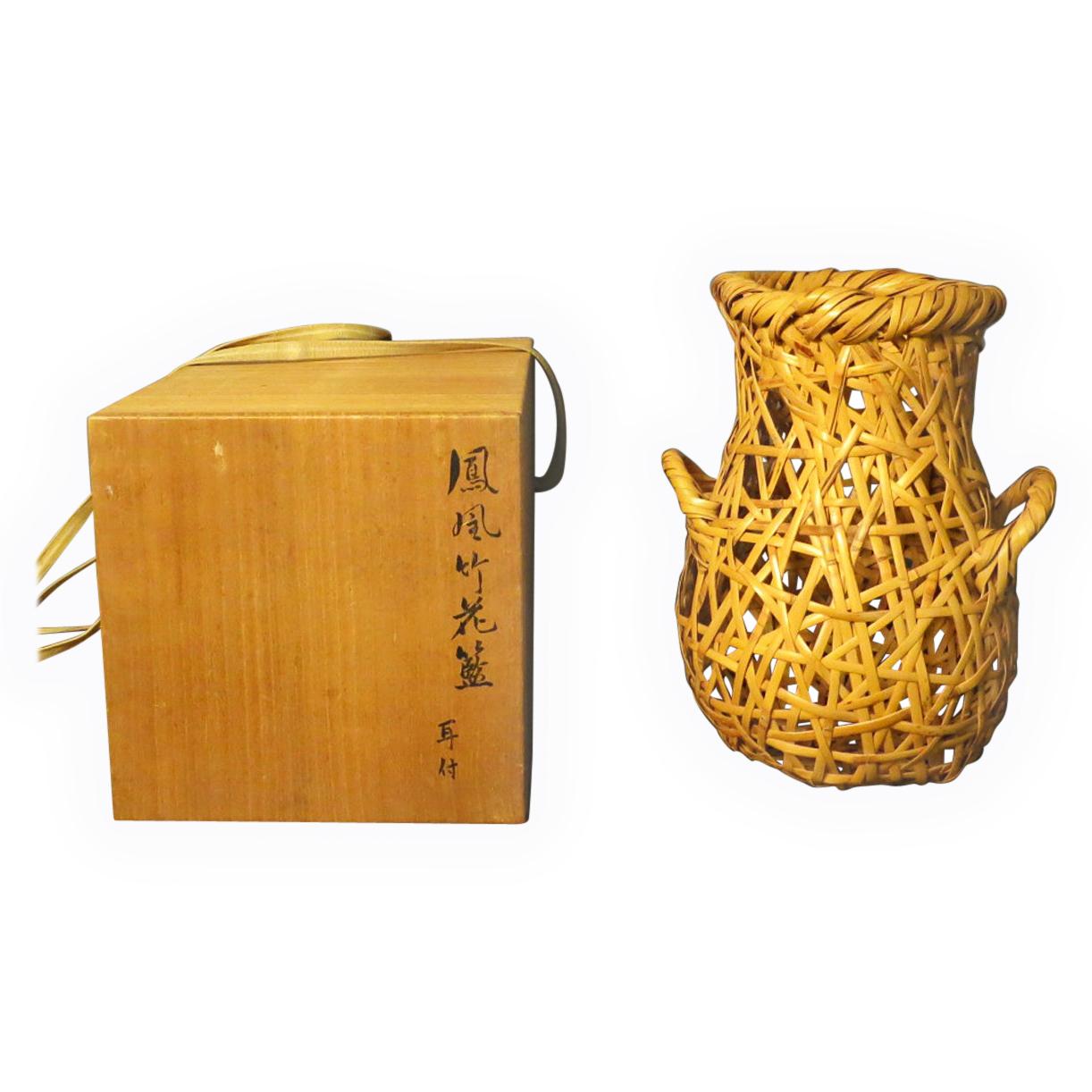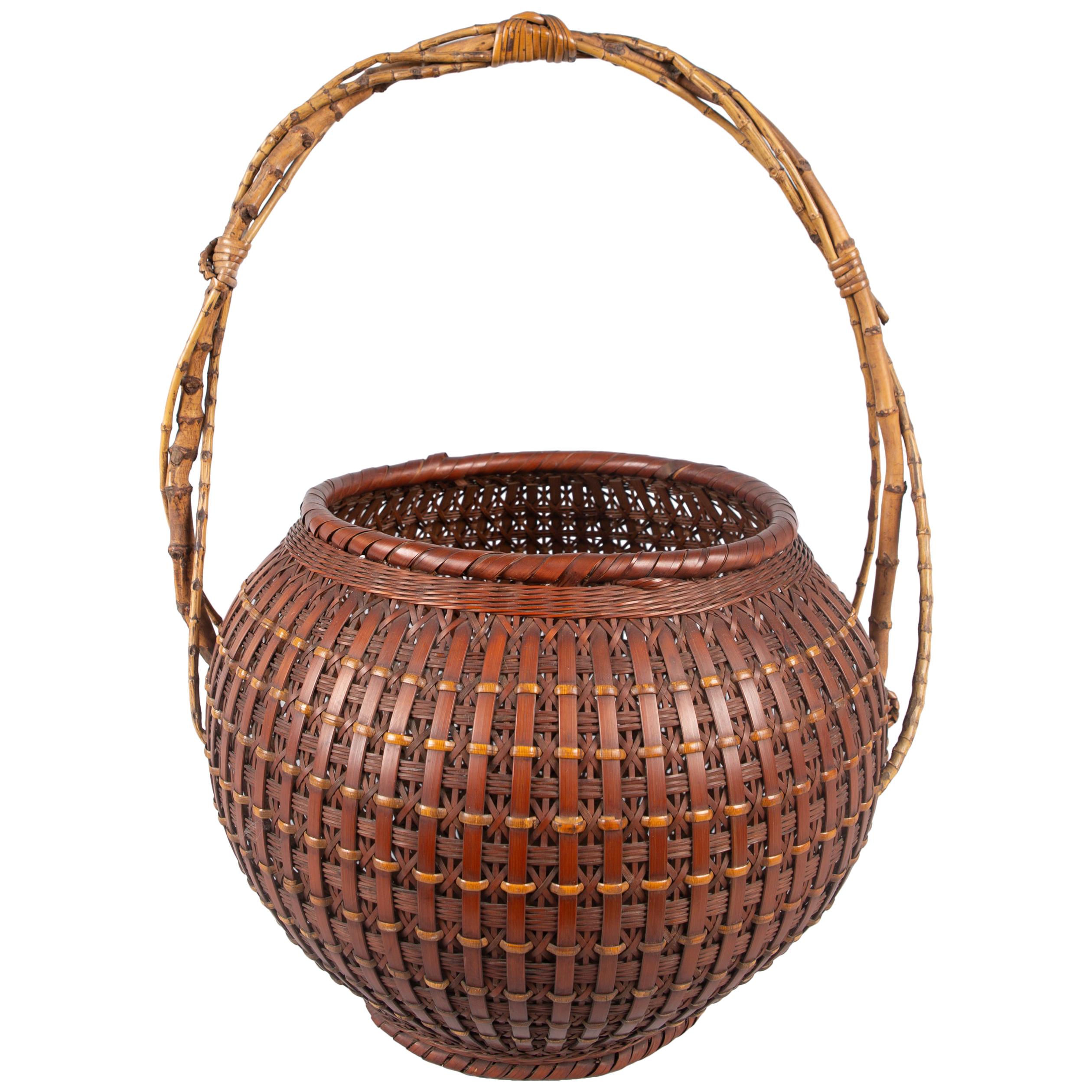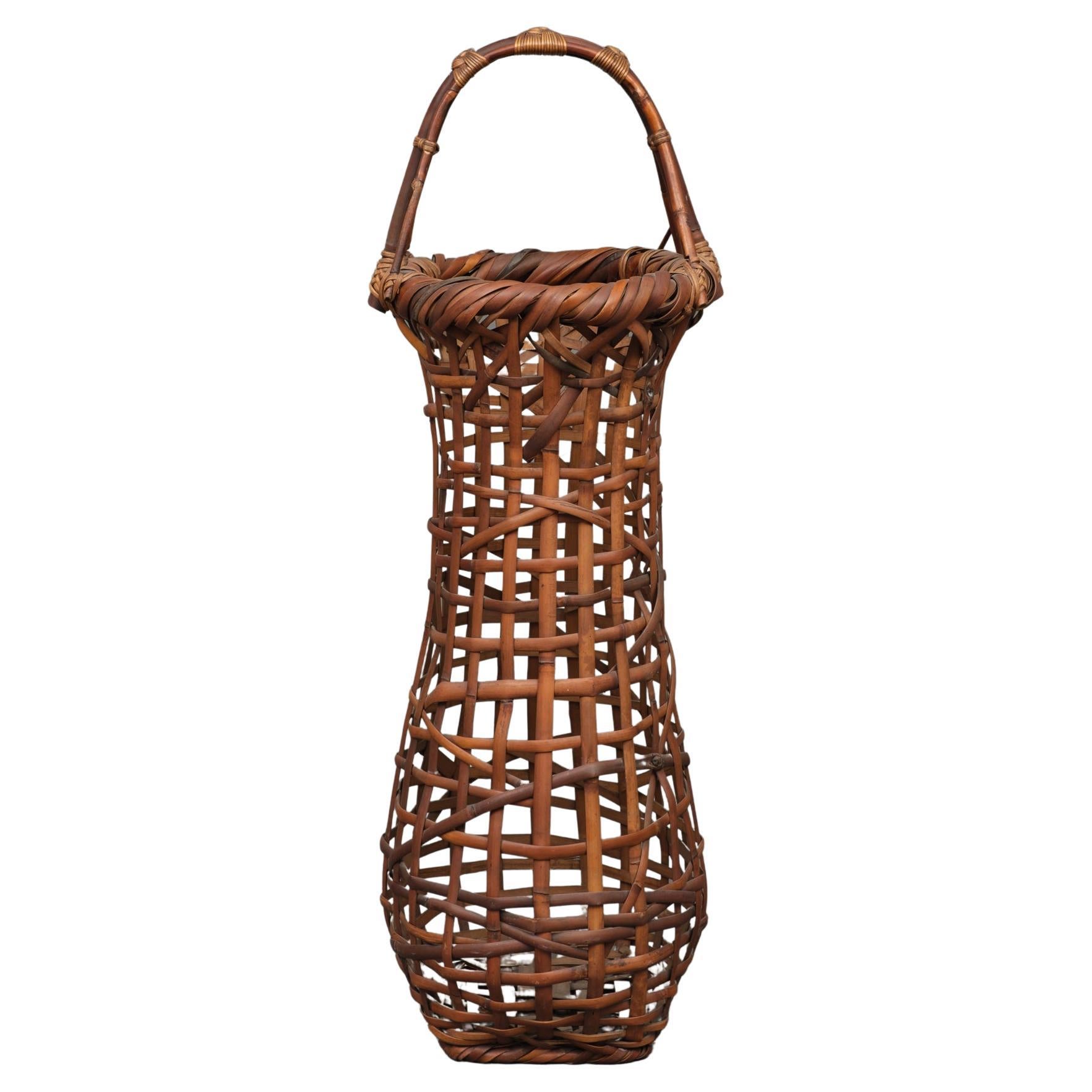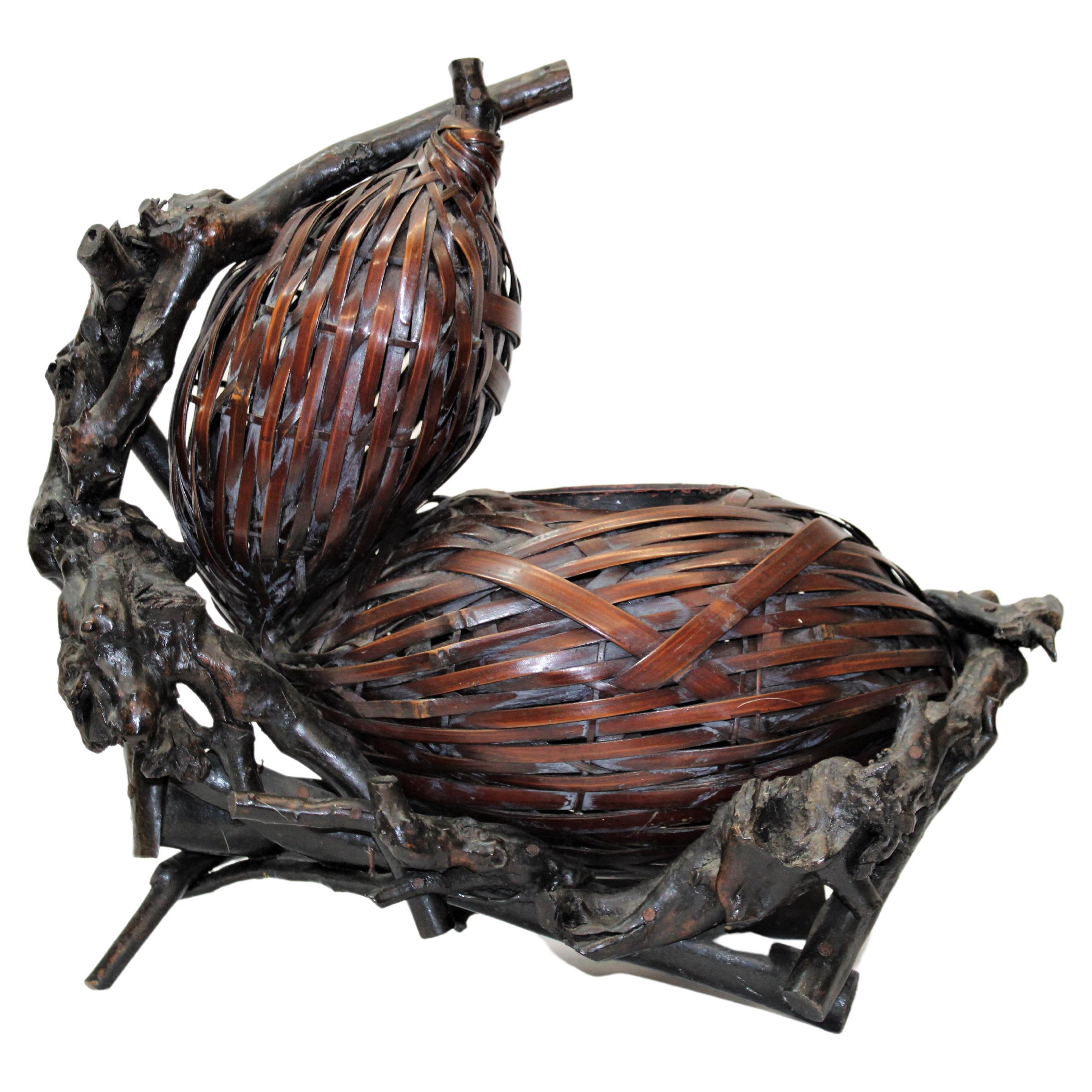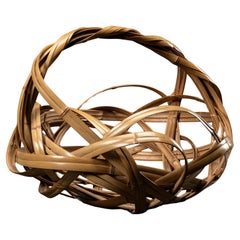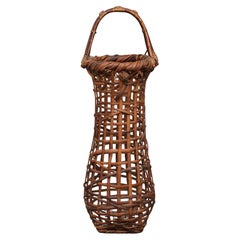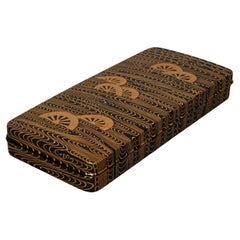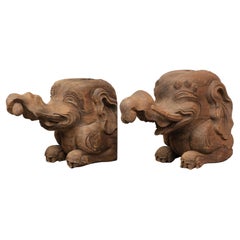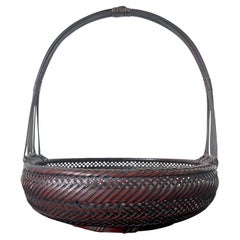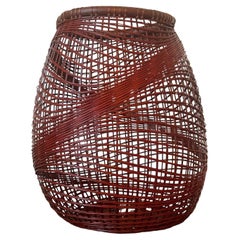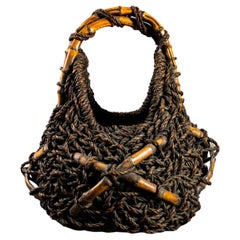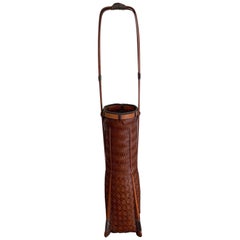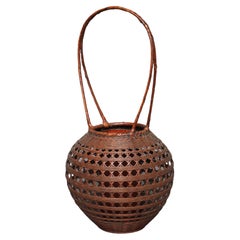
Japanese Bamboo Ikebana Flower Basket 花籠 'Hanakago' by Wada Waichisai Iii 和田和一斎
View Similar Items
Want more images or videos?
Request additional images or videos from the seller
1 of 17
Japanese Bamboo Ikebana Flower Basket 花籠 'Hanakago' by Wada Waichisai Iii 和田和一斎
About the Item
- Creator:Wada Waichisai Iii (Artist)
- Dimensions:Height: 21.66 in (55 cm)Diameter: 10.63 in (27 cm)
- Materials and Techniques:
- Period:
- Date of Manufacture:Shôwa period 1926-1989
- Condition:Wear consistent with age and use. The basket and vase are in very good condition. The vase with minimal traces of age. Please look at the photos for a condition reference.
- Seller Location:Amsterdam, NL
- Reference Number:Seller: 934611stDibs: LU7165231322252
About the Seller
4.8
Vetted Professional Seller
Every seller passes strict standards for authenticity and reliability
Established in 1996
1stDibs seller since 2022
22 sales on 1stDibs
Typical response time: 9 hours
Authenticity Guarantee
In the unlikely event there’s an issue with an item’s authenticity, contact us within 1 year for a full refund. DetailsMoney-Back Guarantee
If your item is not as described, is damaged in transit, or does not arrive, contact us within 7 days for a full refund. Details24-Hour Cancellation
You have a 24-hour grace period in which to reconsider your purchase, with no questions asked.Vetted Professional Sellers
Our world-class sellers must adhere to strict standards for service and quality, maintaining the integrity of our listings.Price-Match Guarantee
If you find that a seller listed the same item for a lower price elsewhere, we’ll match it.Trusted Global Delivery
Our best-in-class carrier network provides specialized shipping options worldwide, including custom delivery.More From This Seller
View AllMassive and exceptional Japanese bamboo hanakago 花籠 (ikebana flower basket)
Located in Amsterdam, NL
A massive and exceptional bamboo hanakago (ikebana flower basket). The unusual and modernist basket with a loop handle and showing fine wickerwork in thick strips of bamboo of a ligh...
Category
20th Century Japanese Decorative Baskets
Materials
Bamboo
Tall Japanese Woven Bamboo Ikebana Basket by Kosuge Kôgetsu 小菅吼月 (1932-2017)
By Kosuge Kogetsu
Located in Amsterdam, NL
Tall woven bamboo and rattan baluster-shaped ikebana flower basket (hanakago) with a loop handle by Kosuge Kôgetsu (1932-2017).
The basket is loosely plaited with bamboo strips in m...
Category
Early 20th Century Japanese Antiquities
Materials
Bamboo
Japanese Lacquer Suzuribako 硯箱 'Writing Box' by Hattori Toshio 服部俊夫 '1943'
By Hattori Toshio (Shunsho)
Located in Amsterdam, NL
A small Japanese black and gold lacquer suzuribako (writing box) with cartwheels in water, by the artist Hattori Toshio (1943).
Of rectangular form with rounded corners, bearing a lustrous rôiro ground throughout, the exterior sides of the box and exterior of the cover finely decorated in gold and little silver takamaki-e with cartwheels flowing in a dynamically executed body of water with many swirls
and gushes as well as scattered dew drops, the interior tray fitted with a rectangular ink stone and silver suiteki (waterdropper).
The underside signed ‘Toshi’.
With the original wooden tomobako with hakogaki reading Namikuruma makie suzuribako (The
writing box set, with a design of wheels in water), as well as a leaflet written in Japanese with the artist’s biography up to 1987.
Hattori Toshio (b. 1943), art name Hattori Shunsho, was first selected for the Nitten exhibition in Showa 38 (1963). Since then, he has exhibited more than twenty times at the Nitten and other exhibitions, winning numerous prestigious awards. In 1995,
he had an audience with Pope John Paul II and presented the Pope with a lacquer reading table. In 2004, he created the shelves for the guest room of the Kyoto State Guest House of the Government of Japan. He is a member of the Kyoto Crafts Artists Association, the Kyoto Lacquer...
Category
Late 20th Century Japanese Lacquer
Materials
Wood, Giltwood, Lacquer
Pair of Japanese Carved Wooden Temple Ornaments 木鼻 'Kibana' Shaped like Baku 獏
Located in Amsterdam, NL
A lovely pair of very detailed carved wooden temple ornaments (kibana) in the shape of elephant-like mythical creatures known as ‘Baku’.
Baku are Japan...
Category
Antique Early 19th Century Japanese Sculptures and Carvings
Materials
Wood
$3,703 / set
Free Shipping
Pair of Japanese cast iron chôshi 銚子 (sake kettles) with lacquered lids
Located in Amsterdam, NL
Pair of enticing cast iron chôshi (sake kettles) with a detailed lacquered lid, raised by three low feet. Its rotund body with a subtle embossed design of stylized symbols, like myth...
Category
Antique Early 19th Century Japanese Antiquities
Materials
Silver, Iron
Japanese Edo-period gosho’ningyô 御所人形 (palace doll) of plump, seated child
Located in Amsterdam, NL
A charming gosho’ningyô (palace doll) of plump, seated child with a brilliant white skin and a small delicately elegant face, reminiscent of a young noble. The doll is playfully rais...
Category
Antique Early 19th Century Japanese Antiquities
Materials
Paste, Silk, Paint
You May Also Like
Japanese Woven Bamboo Ikebana Basket
Located in Atlanta, GA
A Japanese woven bamboo basket with handle from early 20th century, circa end of Meiji to Taisho period. The basket was constructed in the form o...
Category
Early 20th Century Japanese Japonisme Sculptures and Carvings
Materials
Bamboo
Japanese Bamboo Basket Ikebana by Abe Motoshi
By Abe Motoshi
Located in Atlanta, GA
A Japanese Ikebana bamboo basket woven by artist Abe Motoshi (Japanese, b. 1942). Constructed with lacquered reddish Madake bamboo and rattan with technique of open and irregular twinning, the basket features an organic form with undulating woven surface with wavy crossing lines. The basket appears simple and refined, but the making process is deceivingly sophisticated. Clean and precise, it is of the signature style of Abe Motoshi's.
The basket is signed on the base. It comes with the original tomobako storage box with inscription of the title on the lid as well as the artist's name and seal under the lead. A yellow wrapping cloth and a printout of the artist's biography from Tai Modern...
Category
Early 2000s Japanese Modern Sculptures and Carvings
Materials
Bamboo, Rattan
Japanese Flower Arranging 'Ikebana' Basket
Located in Hudson, NY
Bamboo construction with twisted rope design. Artist signature reads: Chikubi-Sai (opening measures: 6 1/4" diameter).
Category
Early 20th Century Japanese Decorative Baskets
Materials
Bamboo
Elegant Japanese Lacquered Ikebana Bamboo Basket
Located in Atlanta, GA
A vintage Japanese ikebana made from lacquered bamboo basketry circa first half of the 20th century. This piece of bamboo art displays an very light and delicate classic tapered squa...
Category
Early 20th Century Japanese Japonisme Scholar's Objects
Materials
Bamboo, Rattan
$1,600 Sale Price
20% Off
Japanese Hanging Bamboo Ikebana Basket Signed
Located in Atlanta, GA
A Japanese bamboo Ikebana hanging basket circa 1920s-1940s, made with "sooted" bamboo (susutake in Japanese). This bamboo material was collected from traditional thatched-roof houses...
Category
Early 20th Century Japanese Japonisme Sculptures and Carvings
Materials
Bamboo
Japanese Bamboo Basket Ikebana Suzuki Gengensai
By Suzuki Gengensai
Located in Atlanta, GA
An elegantly woven bamboo basket with handle as an ikenana container by Suzuki Gengensai (1891-1950) circa 1923-50. Suzuki Gengensai was from Kansai region and active in Osaka. He studied bamboo art under Yamashita Kochikusai (1876-1947) and became an independent artist in 1913. He received his artist name Gengensai in 1914 and in 1923 he changed the characters to Gen, a slight written variation of the character. This basket was signed in this later variation, which helps to date the piece to post 1923.
The basket is woven entirely in a free style irregular plating on the body and with a twisted bundled handle. The surface is lacquered in a deep reddish color. The seemingly less rigid technique renders the piece a more rustic and natural aesthetic that is more suitable for certain occasions. It is singed on the base with artist's signature in the variation post 1923.
A very similar basket of the irregular weaving but without the handle is illustrated in plate 72 in "Baskets Masterpieces of Japanese Bamboo Art...
Category
20th Century Japanese Japonisme Scholar's Objects
Materials
Bamboo
Recently Viewed
View AllMore Ways To Browse
Japanese Woven Bamboo Ikebana
Woven Bamboo Vase
Bamboo Ikebana Vase
Japanese Ikebana Basket Vase
Ikebana Containers
Vintage Indigo Kimono
Cizhou Pillow
Gandhara Head
Chinese Coconut
Neolithic Amphora
Seated Buddha Marble
Thai Lanna
Chinese Zodiac Figures
Gandhara Buddha
Han Dynasty Cocoon
Japanese Pillow Vase
Natural Rock Sculpture Figurine
Tibetan Conch Shell
